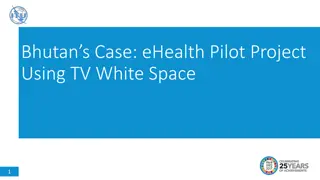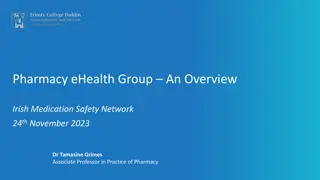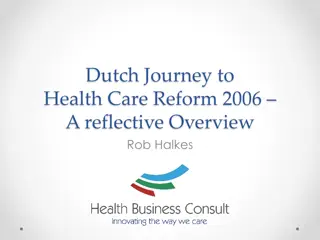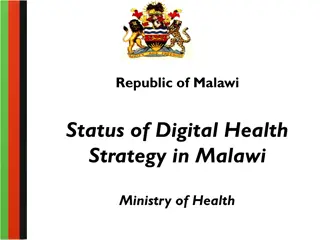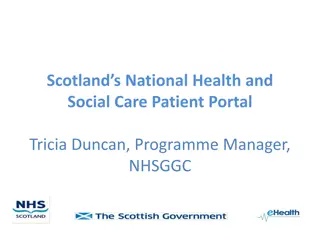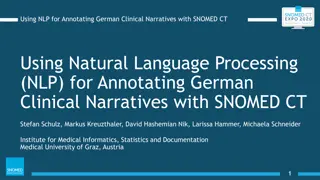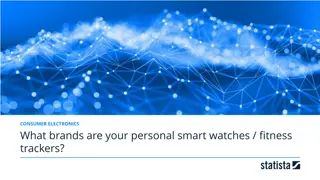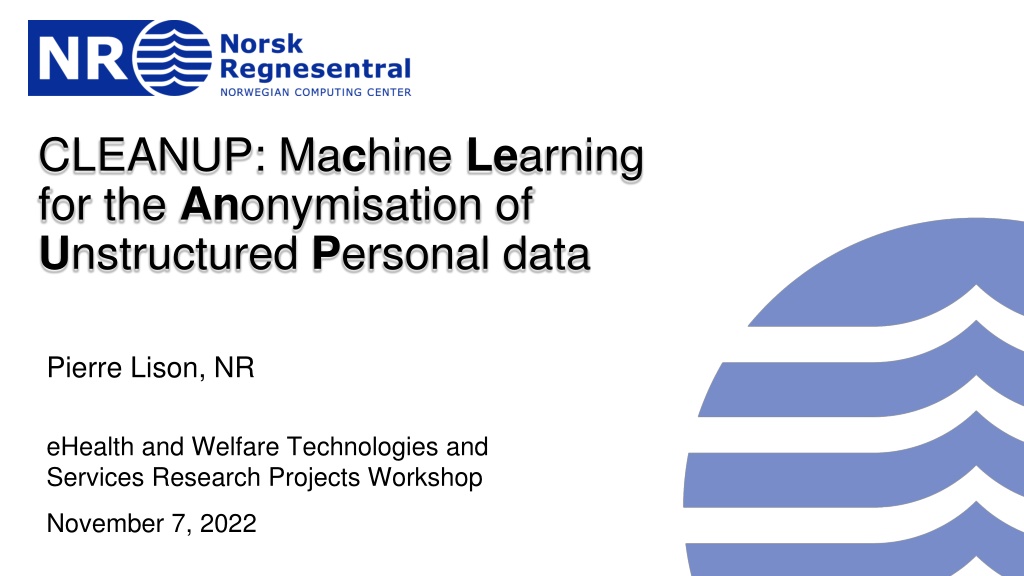
Data Anonymisation Using Machine Learning: Tools & Challenges
Explore machine learning methods for sanitizing personal data in unstructured texts, focusing on masking personally identifying information and addressing limitations of current state-of-the-art models. Discover a new dataset of court cases annotated for privacy protection, along with a multifaceted approach to text sanitization.
Download Presentation

Please find below an Image/Link to download the presentation.
The content on the website is provided AS IS for your information and personal use only. It may not be sold, licensed, or shared on other websites without obtaining consent from the author. Download presentation by click this link. If you encounter any issues during the download, it is possible that the publisher has removed the file from their server.
E N D
Presentation Transcript
www.nr.no CLEANUP: Machine Learning for the Anonymisation of Unstructured Personal data Pierre Lison, NR eHealth and Welfare Technologies and Services Research Projects Workshop November 7, 2022
Free-form texts constitute a large part of the data we gather or produce: Electronic health records Court rulings Case-handling notes Interactions with clients Etc. Can we edit those documents to mask personally identifying information (PII)?
CLEANUP Main goal: develop new machine learning methods to automatically sanitize text documents Editing/masking
Text sanitization Current state of the art: sequence labelling with fine-tuned neural language models Limitations: Does not remove enough (typically limited to named entities) Removes too much (masks all detected occurrences of a given entity type, regardless of risk) Lison, P, Pil n, I., S nchez, D., Batet, M. and vrelid, L. (2021) Anonymisation Models for Text Data: State of the art, Challenges and Future Directions. ACL 2021.
Two-steps approach Step 1 : privacy-enhanced entity recognition Named entity recognition + Wikidata properties associated with human individuals Step 2: privacy risk measures Neural language models + Web search High risk Step 3: optimization Search solution that keep privacy risk below a threshold, but retain as much content as possible Anthi Papadopoulou, Yunhao Yu, Pierre Lison and Lilja vrelid, Neural Text Sanitization with Explicit Measures of Privacy Risk , to be published at AACL 2022.
New dataset: 1278 court cases from the ECHR annotated for personal information: Semantic type, masking decision, confidential attributes, co-reference relations, etc. 12 law students involved in the annotation (about 1000 hours in total!) To appear in Computational Linguistics, December 2022 We also present new evaluation metrics to assess the quality of text sanitization methods Both in terms of privacy protection and utility preservation
Patient records Collaboration with the Norwegian Health Archives to sanitise patient archives 6 categories to detect: patient name, personal identification number, date of birth/death, name of relative, home address & contact information (phone numbers etc) Main challenge: scanned PDFs as input! 7
Can such sanitization process lead to GDPR-compliant anonymization? Short answer: no. (at least if one is unable/unwilling to delete the original dataset)
Take-home messages Editing/masking NLP can be employed to automatically or semi- automatically sanitize text documents Including text data in electronic patient records As always: balance between privacy and utility But the output cannot be considered as anonymous 10





